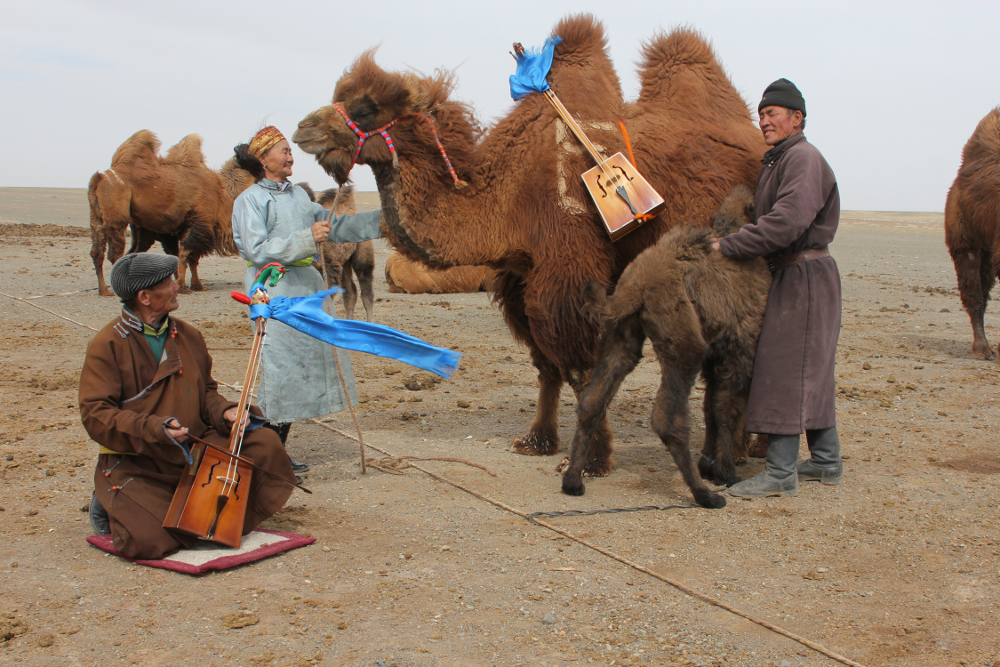The largest population of Bactrian camels, or camels with two humps, thrive in the harsh conditions of the Gobi Desert. Sometimes female camels reject their offspring after a difficult birth, but Mongolian herders devised a technique to help rebond the mother and baby colt.
Mongolian herders use a tradition of coaxing the mother to accept her newborn or orphan camel. Herders sing and play musical instruments to persuade the mother into accepting the baby camel. The ritual may take hours, depending on the camel’s behavior.
The Mongolian Camel Coaxing Ritual
Shaggy Bactrian camels are usually pregnant for 13 months. It is common for either the mother or baby camel to die after delivery due to the harsh conditions in the Gobi desert. This often results in orphan camels or grieving mothers. (Source: Atlas Obscura)
Due to the common condition, Mongolian herders developed a unique musical ritual to help form the bonds between mother camels and orphaned calves or mother camels who rejected their offspring. The tradition is usually done during dusk or dawn, and everyone present wears their best traditional clothes.
The coaxer starts playing his morin khuur, a native horsehead fiddle. Sometimes a Mongolian flute is used. The mother camel and calf are tied together, and once done, the ritual starts with the coaxer chanting khuus, khuus, khuus.
Usually, the mother ignores the calf tied to her, but there are times that she becomes aggressive, biting or spitting on the calf. If this happens, the coaxer will adjust the melody accordingly. The singer will then incorporate traditional poems or songs with the melody. Sometimes the coaxers will mimic the sound of the camel’s walking or running.
The tradition is known to take hours, but when the coaxers notice that the mother camel and calf begin to weep, they understand that the ritual was effective. The camels now have a unique bond that will last their lifetime.
It is known that the ritual helps the herder and owner of the camels. Besides the mother taking care of the calf, the herder also gains a steady supply of camel’s milk as long as the mother is still nursing. Camel milk is an essential source of sustenance in the harsh Gobi desert and gives the primary means to prevent or heal illnesses.
The Coaxing Ritual is a Dying Art
In 2015, a few Mongolians dedicated to the tradition and art of the ritual sent a petition to the United Nations to help them safeguard this practice. Their petition was approved, and the coaxing ritual is now part of the List of Intangible Cultural Heritage in Need of Urgent Safeguarding. (Source: Atlas Obscura)
In modern times, fewer and fewer herders have been interested in learning the ritual. To add to this, mining and working in urbanized cities make more money than nomadic herding. Thus younger generations tend to leave their families.
Another trend in the nomadic Mongolian culture is that families send their daughters to study and live in cities. Most do not return, contributing to the diminishing opportunities for the men in the desert to marry and raise families. The introduction of motorbikes is also a contributor to losing the tradition. Many have found that traveling by motorcycles is cheaper and more practical than maintaining camels.
